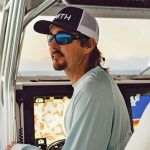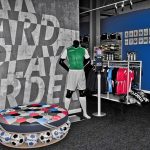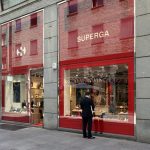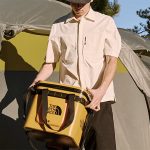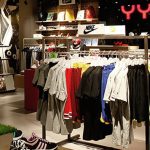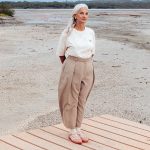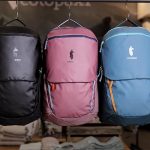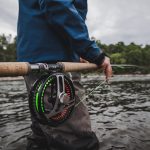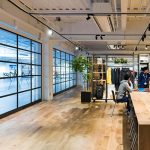In September 2021, Travis Campbell made a leap in acquiring Eagle Creek, a brand that its former owner, VF Corp., had planned to discontinue amid the travel downturn caused by the pandemic. Campbell has since been on a mission to reestablish the 50-year-old brand’s roots in adventure travel.
At the time of the acquisition, Campbell was a VF executive, serving as president of Emerging Brands, which included overseeing Altra, JanSport, Smartwool, and Eagle Creek. He first joined VF as president of Smartwool in early 2017 and was GM Americas for The North Face from July 2018 to March 2020. Before VF, Campbell spent nearly 15 years – including over eight years as CEO – at Far Bank Enterprises, the parent of the Sage, Redington and RIO Products fly-fishing brands, after beginning his career at Deloitte.
Campbell spoke with SGB Executive about the ongoing reset of Eagle Creek and the opportunities in the adventure travel consumer market.
SGB Executive: What did you initially see as the opportunity in acquiring Eagle Creek, and has that changed as you’ve learned more about the brand and the travel business?
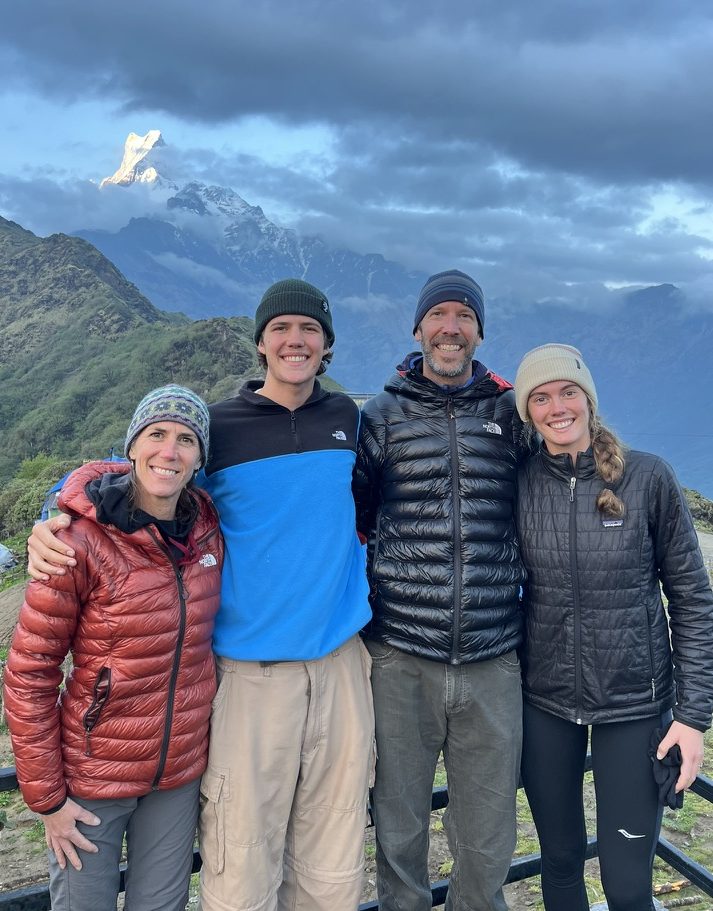 Travis Campbell: It’s hard to believe we’re just about to lap our four-year anniversary. For sure, we’ve learned a lot. I think the early, early phases of it played out somewhat like I expected. When we bought it, it was 47 years old. It’s turned 50 this year. From my time in the outdoor space, I knew Eagle Creek as one of the original core outdoor brands, and it felt like there was a lot of value and a lot of awareness in the brand globally. I believed in people’s desire to get back out into the world and travel post-pandemic, and that certainly came true. 2022 and 2023 and at least a bit of 2024 were a boom time for global travel, and we benefited from that. The return to travel gave us a window of time to build the core of what we call “Eagle Creek 3.0”, giving us the oxygen we needed to rebuild the business and put it on stable footing.
Travis Campbell: It’s hard to believe we’re just about to lap our four-year anniversary. For sure, we’ve learned a lot. I think the early, early phases of it played out somewhat like I expected. When we bought it, it was 47 years old. It’s turned 50 this year. From my time in the outdoor space, I knew Eagle Creek as one of the original core outdoor brands, and it felt like there was a lot of value and a lot of awareness in the brand globally. I believed in people’s desire to get back out into the world and travel post-pandemic, and that certainly came true. 2022 and 2023 and at least a bit of 2024 were a boom time for global travel, and we benefited from that. The return to travel gave us a window of time to build the core of what we call “Eagle Creek 3.0”, giving us the oxygen we needed to rebuild the business and put it on stable footing.
There were definitely pieces that didn’t play out like we expected. I talked with Steve Barker, who co-founded Eagle Creek with his wife Nona, and he cautioned me that travel is a great market, but it’s not linear. It’s subject to a lot of external shocks, whether economic shocks or pandemic-related shocks. Some of them you can predict, like when the economies go bad people deprioritize travel. But some things, like reciprocal tariffs, you can’t predict.
It hasn’t been a totally linear journey for us, but one of the things that gives me long0term belief in what we’re doing is I really do believe as a species, we’re better for travel, we want to travel, and we’ll prioritize travel all things being equal. So, I still think travel is a good space to be in fundamentally.
SGB: You’ve never owned a business before, and this seems much more entrepreneurial. From a career perspective, why did you decide to acquire Eagle Creek?
Campbell: I always say I never intended to be an entrepreneur. My siblings are all entrepreneurs, but I’ve never thought of myself that way. It wasn’t my expected career trajectory.
The backstory was that I had evolved at VF into a role where I was no longer running a brand day-to-day. I was sitting over a portfolio of brands, and I realized that I missed what I call “living in a brand.” I’ve always been fortunate that I’ve gotten to work for these great outdoor-based, passion-based lifestyle brands that fit my lifestyle too, and I valued that, and I valued building teams in that space. But my role had evolved to where I was no longer doing that. I was managing the leaders of brands, rather than the brands themselves, and I realized I missed it. So, I had started looking for other CEO jobs. At the same time, my kids were in high school, and we didn’t want to leave Steamboat Springs. I was realizing there’s not a whole lot of CEO jobs in the outdoor space in Steamboat. When the Eagle Creek opportunity came around, it was my wife who connected the dots for me and for us and said, ‘Here’s an opportunity. We don’t want Eagle Creek to go away. If we got a hold of it, we could move it to Steamboat, and you have a job in Steamboat, and you’re back to running a brand like you want to. So, off we went.
SGB: Beyond the relocation and hires, what are some primary changes you’ve made to reset the Eagle Creek business?
Campbell: The two biggest things were around product and our positioning, or like the view of ourselves that we project out into the world. From a product standpoint, it was two pieces. One was visually and functionally, putting the adventure back into our bags. From my perspective, Eagle Creek had become a little bit homogenous travel and we needed more clear cues around our durability and our versatility. So that meant bigger zippers again and bigger buckles and just more overt queuing that these things could survive under any adventurous scenario. As we were refreshing our range, we also had the opportunity to accelerate our sustainability work. We’ve transitioned from a decent sustainability position coming out of VF to one where this season, essentially all of our fabrics are 100 percent recycled.
Eagle Creek is also known for its “No Matter What“ lifetime warranty and we worked hard to optimize that from both a consumer experience and sustainability standpoint. In a perfect world, having consumers take care of the repair themselves is ideal. The carbon footprint in shipping big pieces of luggage to repair centers and back to consumers is pretty onerous. It’s way better if we can just ship the consumer a wheel if that’s what broke and have them swap it out themselves. We really leaned into starting to design around that repairability, and we’ve moved what we call “home repair“ up to around 40% of the repairs we process. It might be an incremental hassle for you, but at the end of the day, it’s probably faster and it’s certainly better from an environmental standpoint.
SGB: What about changes to Eagle Creek’s positioning?
Campbell: On the brand side, it was also about putting the adventure back in the visuals and the storytelling that we were pushing out in the world. Adventure can mean a lot of different things. For some people, it’s going to the top of Everest. For others, it might be going camping in a state park near their house. So, it’s about trying to figure out how to position our products as applicable in both those environments, but centered around the idea of durability and versatility and the confidence that comes from knowing your gear will stand up to whatever adventure you want to give it.
Four years in, with a more stable business and robust team, we’re also starting to use our voice as a brand to advocate more clearly about issues facing adventure travelers and the overall outdoor industry. That will likely ever be our primary position but it’s important for our consumers to understand our values.
SGB: How has Eagle Creek been performing?
Campbell: Obviously, the pandemic was hard on the travel businesses, particularly people who sold a lot of luggage. That essentially gave us the opportunity to get a hold of Eagle Creek because the business had declined enough during the pandemic that VF made the decision to get rid of it.
By early 2022, we certainly saw signs of the market recovering and consumers wanting to get out there and travel and needing to buy travel gear to make that happen. That was an interesting window because so many retailers and brands had de-emphasized travel, creating a scarcity scenario where consumers were scrambling to find products, and there wasn’t a lot of availability. We were fortunate because we made some early bets and had inventory in 2022 and 2023. We didn’t necessarily have as much as we wanted, but I think we were in a better position than some. We had great demand tailwinds through both of those years, including globally, because about one-third of our business is outside the U.S.
Fast forward to fall 2024, we started seeing some slowdown starting in our gear products, luggage in particular. One of the things with luggage is that it has a pretty long repeat purchase cycle, and that demand was pretty satiated by then with people buying a lot of luggage in 2022 and 2023. A lot of brands, particularly from the outdoor space, had seen that travel boom and decided they needed to dive into the market, so we had a lot more travel product in the space starting in fall 2024 and certainly spring 2025, and that unfortunately coincided with that consumer slowdown. Also in early 2025, all of the Trump administration’s gyrations did a good job of slowing down the travel market and thus impacting travel good sales.
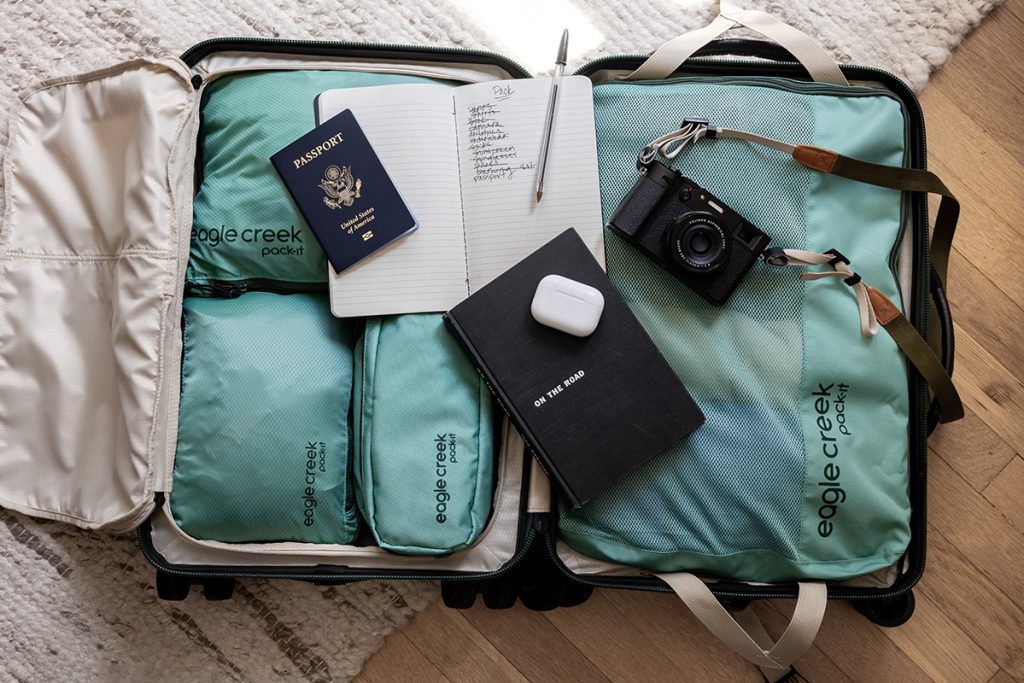
SGB: The adventure travel business within the outdoor specialty channel hasn’t recovered from the pandemic. Can you talk about the importance of the outdoor specialty business for Eagle Creek and the opportunity?
Campbell: Speaking specifically to the U.S., to keep it simple, the outdoor specialty space is one of our biggest channels, and it’s super material to us and it can be a lot bigger. A lot of the specialty retail world is still trying to figure out how to re-address travel post-pandemic. What it feels like is travel is still being treated somewhat as an item business, meaning you’ll go into a store and find the luggage over in one spot, the packing cubes in another, and duffels over in camping or some other area. Pre-pandemic, I think retailers had a lot more cohesive travel outfitting stories going where a consumer could walk in and see how to outfit themselves from soup to nuts on travel with luggage, packing, cubes, accessories all together. That helps sales. Whether it’s because they’re risk-averse around travel or the world doesn’t necessarily like to switch on a dime, they’re focused on other categories.
I continue to believe in my original premise that people are ultimately going to focus on travel in their lives and there will be travel tailwinds in the market over time. More and more of the business has been going online since the pandemic, but the travel consumer wants to be able to touch and feel things physically. It’s hard to find places where you can see 10 different pieces of luggage in person. There is a big opportunity for specialty to focus more on a travel story in their stores.
SGB: What are Eagle’s Creek’s biggest categories?
Campbell: One of the things I’ve liked about the business is it’s been pretty balanced between traditional luggage or wheeled luggage; carry product which would be backpacks, duffel bags and things like that; and the third being organization like packing cubes and accessories such as eye shades and neck pillows. On a global basis, it’s about a third each between those categories.
SGB: Can you highlight some key launches this year?
Campbell: On July 1, we launched an update to the Tarmac, which has traditionally been one of our best-known luggage pieces. We launched what we call a hardside hybrid. It features a polycarbonate shell that gives you the security of all those hard shells that exist out there in the world. Our twist on it is a soft front to provide more versatility. You’re not locked into the hardness and the space constraints of a hard shell, but you still get a bit of the softer material benefits there.
For our 50th anniversary, we built what we call our Origin collection, which nods back to some of the original designs from Eagle Creek. Eagle Creek came out of the technical outdoor world at the time, and so they were using heavy canvas and Cordura material, leather patches and leather reinforcement points. So, we brought that back into this Origin series, honoring the aesthetics of 1975, but in a recycled fabrication using Cordura that we think is pretty cool. We’re not expecting to light the world on fire selling those pieces, but it’s a great brand story for us and some really cool heritage product.
SGB: You recently went to Washington, D.C. to lobby against tariffs and the sale of public lands and have been actively involved with the Outdoor Industry Association (OIA). Are your advocacy efforts a personal passion or is there a benefit to Eagle Creek?
Campbell: It’s a combination. I’ve always been a passionate outdoors person and early on in my career, I was lucky enough to get asked to join the Outdoor Industry Association (OIA) Board and spent 12 years on the Board, including a couple years as chairman. OIA has been a leading voice in advocating for the things that matter for the outdoor industry and what I learned pretty quickly is a lot of the things that are good for the outdoor industry are also good for the things I care about personally, whether public lands or clean water. Being a part of OIA made it easier for me to be visible and engaged in advocacy around many issues.
I never expected to be visible in the tariff scenario. When a lot of the early reciprocal tariffs were released, they were so shockingly high and damaging to small businesses in the U.S., including ours, that I felt I needed to be visible about that. I also quickly realized that as an industry, we were not as well-organized today as we were five years ago and unfortunately, I think a lot of our big brands were hesitant to speak out in an environment where our administration is quick to punish people they view as enemies or having an opposing view. So, a lot of our big brands were pretty quiet.
I have used my voice at different times in my career, and it just felt like the right thing to do in the moment. As a private business, I could also be visible and take whatever heat was going to come and it was only going to impact me at the end of the day rather than a bunch of public shareholders. There’s a little bit of personal passion in there. I’m a big believer that small business voices matter. Sometimes there’s not a super clear Eagle Creek benefit to some of the time and money I spend on that effort. But I’ve also always been a pro-industry guy and there’s a long-term benefit to having a strong and healthy industry. If I can contribute to that, I’m always generally up for it.
SGB: How do you see Eagle Creek evolving over the next five years?
Campbell: We’re four years into this, and we’ve learned a lot. Early on, I tended to think of Eagle Creek as an item or a product business, like we sell luggage, or duffel bags or packing cubes. One of the things I’ve learned over the last few years is that there’s actually a travel consumer. In the same way we think there are consumers who are hikers, mountain bikers, and hunters or whatever, and are a brand’s primary focus, there’s similarly adventure travel consumers out there. Eagle Creek has this great opportunity to evolve itself into a more holistic travel lifestyle brand. That doesn’t necessarily mean that we’re going to suddenly build all these crazy categories of travel product, but I think there’s an opportunity for us to become the hub for the adventure traveler. I’m excited today to be working on that and bringing that to life hopefully much more clearly over the next 12 months or so. Looking out five years, our opportunity is to evolve ourselves into the center of people’s travel lifestyle.
Images courtesy Eagle Creek




